

The Deans List is an interview series with the leaders of architecture schools, worldwide. The series profiles the school’s programming, as defined by the head honcho – giving an invaluable perspective into the institution’s unique curriculum, faculty and academic environment.
For this issue, we spoke with Chris Knapp, Discipline Leader of Bond University's Abedian School of Architecture in Queensland, Australia.
The Abedian School of Architecture at Bond University lies on Australia’s mesmerizing Gold Coast, and has recently undergone a radical revisualization of its programming under Architecture Discipline Leader and Assistant Professor, Chris Knapp. Abedian completed its brand new facility just last year, designed by CRAB Studio (learn more about the building in our ShowCase on their project), in part to distinguish the architectural faculties within both the University and global architecture community. With only fifty undergraduate and sixteen graduate students, the school’s small size creates an intimate environment for free collaboration and willful competition. With the first masters class graduating in May 2015, Knapp is crafting Abedian’s reputation at the forefront of architecture’s international and technologically-driven community.
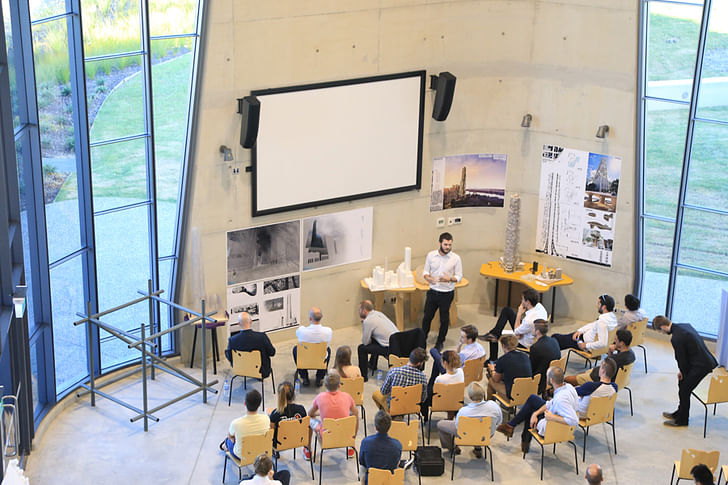
Amelia Taylor-Hochberg: Briefly, what is your own pedagogical stance on architecture education? How would you characterize your architecture school’s programming?
Chris Knapp: The school is very new -- we’re just starting our fourth year, and it’s a very small program. When things started it was very exciting opportunity to ask, “What should an architecture school be today?” Because of the school’s newness and size, it’s something that we’ve gone through a number of permutations adjusting to. The school’s outlook is principally design-driven with a professional focus. We want to produce graduates who are ready to go out into the profession and make an impact. And what we’re not interested in doing is producing “drafting room fodder”.
We’ve really tried to position the school to be internationally focused. Rather than being purely driven by questions of what’s happening regionally, or having a very parochial stance that all we worry about is Australian architecture or even southeast Queensland architecture, which can be very insular, we want to pay attention to what’s happening in a very broad sense -- in the Austral-Asian region, along the Pacific Rim, and what’s happening in the northern hemisphere, both in the States and Europe. We’re trying to keep a very close eye on what’s happening in that broad sense, and produce students that can enter into local or international office. We’re very interested in producing students that have an international-caliber toolkit, in terms of their thinking skills and their technical skills.

To be slightly autobiographical, the University of Michigan (where I did my undergrad and also taught for four-five years before coming to Australia) gave me a very technical appreciation for the profession. When I was at Princeton for my Masters degree, it was much more of a theoretical discussion. My own personal perspective is one that tries to bridge those polarities -- not that they need to be thought of as divergent, but they do bring two different kinds of sensibilities. My interest has always been trying to think of the architect as someone that operates effectively in both worlds -- the discursive theoretical and conceptual world, but also a technically driven world.
One thing that we’ve tried to do here is emphasize a very strong “learning through making” philosophy, and to do that we’ve invested heavily in digital fabrication and rapid prototyping equipment. We’re just installing our 150kg payload ABB robotic arm, and that’s going to make us the third school in Australia with one. We’re very interested in playing in that space. Per capita, we have quite a luxurious ratio of equipment to students for a school that only has sixty-five students in it.
That emphasis on harnessing digital technology creates a feedback loop, where we go from the studio’s intellectual framework to utilizing that equipment to create prototypes, and then back again. Investigating things materially is something very, very important for us, and engendered in the philosophy of the school. It’s trying to look more broadly and ask where the profession will be in ten, twenty years from now. Digital design tools, digital fabrication and computer aided assembly or robotic assembly are all going to be much more pervasive, especially on construction sites.
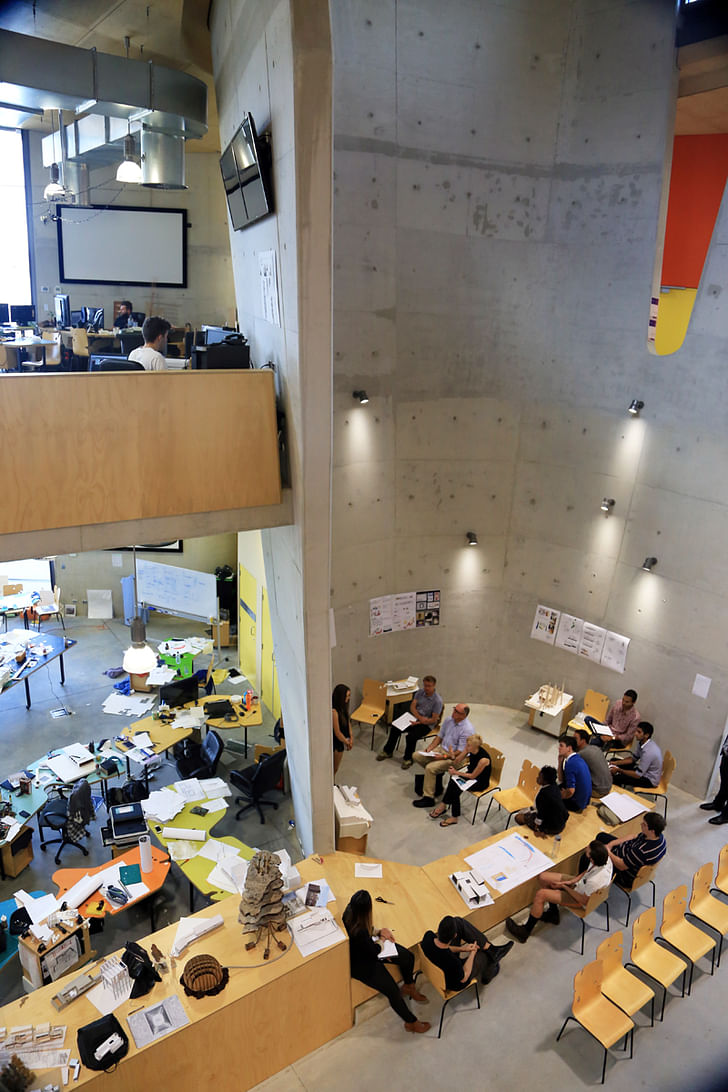
What kind of student do you think would flourish at your school, and why?
We attract students looking for a more boutique experience, who place high value on student-to-teacher contact and familiarity. Because we have very low numbers, we have an excellent ratio of 1:10 staff to student, something we’re able to maintain both through studios and other lecture-based subjects. I think that’s one of the things that students really appreciate and benefit from. The architecture school has introduced a new form of teaching, a new pedagogical approach to the campus, which is the studio-based model. For architecture students and schools worldwide it’s obviously nothing new, but for Bond it’s something that they’ve had to get their heads around, in terms of understanding what that means and the kind of spaces they’ve had to provide. So the learning curve for the university has been quite tremendous, in terms of administration.
We try to impress upon students the fact that an architectural training can really equip people to do quite a broad number of things.A student that has a strong sense of self and a self-critical perspective will thrive here. Because it’s such a small school, every single student stands out, with no crowd to hide in. So far, we’ve graduated two classes of about twenty students each. Because of that smallness, it really does mean that it’s a different kind of student.
In our very first class of twenty students that went into the world, we had eight get jobs in international offices – in Tokyo, Boston, Shanghai, Singapore, New York, Milan… this has to do with students who are very, very interested in looking broadly to the international scene, and thinking of themselves as global citizens. I think that’s the full cycle of our program’s ethos -- giving students these skills and capabilities to being able to go out and work at that level, with that kind of mentality.
What are the biggest challenges that students face as fledgling architects?
In terms of the being a part of a small school, you have the benefit of working in a tight-knit group that forms very good friendships. We’ve worked hard to establish a strong studio culture, especially since we’ve been in the new Peter Cook building, only since October of last year. Previous to that, the program was much more fractured -- we had studios in classes taking place in various parts of the campus.
Now that we’ve got all of our undergraduates and masters students in the building together, there’s started to be a much stronger relationship in terms of students sharing skills and resources and experiences. That’s really helped ramp up the overall quality of the school and the experience for the students. They do tend to be a fairly competitive group, but we try to make them all strive for a very high level, while also supporting and sharing with each other.
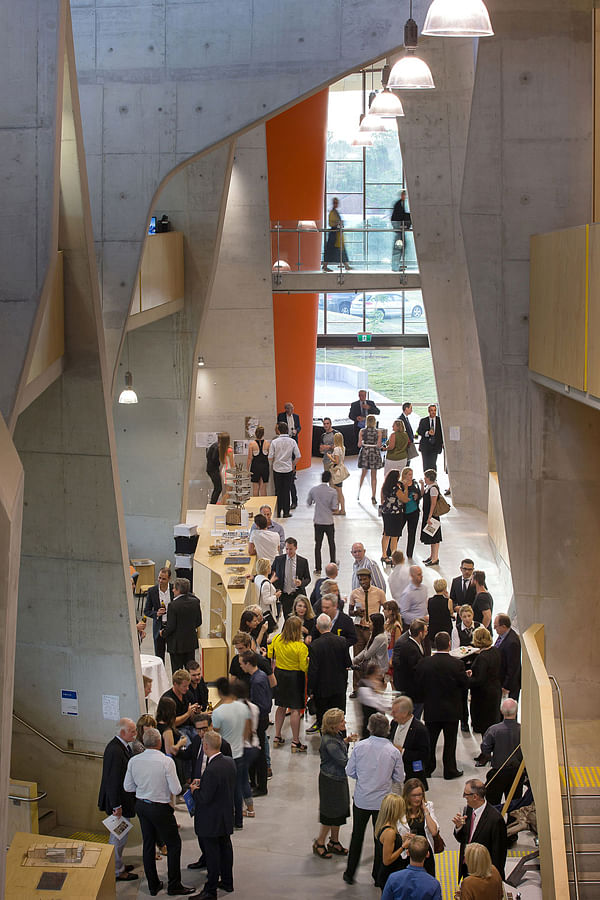
There is that added pressure that comes with being in a smaller school, where you can’t hide or disappear, but I think the converse of that is we can quickly identify students that are struggling and give them lots of support. In that sense, what we’re really trying to do is maintain an overall high quality of student work, while also helping students manage a very intense workload.
The other thing that is fairly unique about the program, something that we’ve been very mindful of creating in the curriculum, is an integrated delivery model, where studio is really the catch-all for all of the curriculum. This allows for a certain kind of inbuilt efficiency, and we can use the design studio and the design studio project as the locus for all this other activity.
Because of that, we feel like we’re helping to create students who have a much more synthetic view of the discipline, and that their integrated set of skills mirrors what practice is really like, where you’re never really exclusively working on one thing at a time. When you feel very spread thin as a student, the studio becomes the main driver of all the other curriculum - because studio takes over your life - so instead of ignoring that, we’ve tried to take advantage of it.
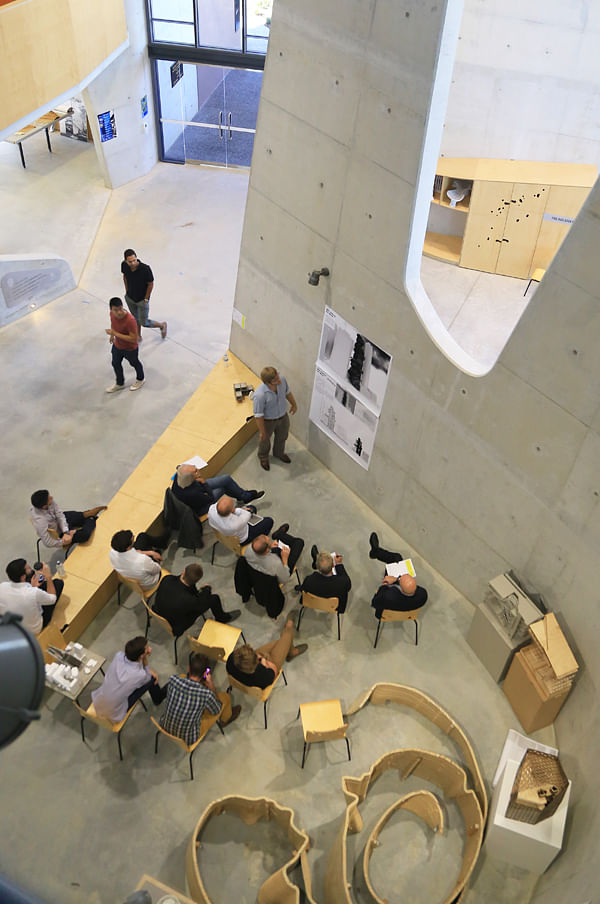
Regarding students as they head out into the world, I think the world is only going to continue being more and more tumultuous and unpredictable. Australia, fortunately or otherwise, has been more insulated from the global financial crisis. There’s quite a good resources boom that’s been going on for quite a long time, in terms of mining and so forth, which has helped to prop up the Australian economy. It hasn’t been quite as good to the building industry, but it’s meant that there’s been a relatively high demand for architecture and people with architectural skills. On the one hand, I think you try to teach people to be really proficient architects so that they can go into more traditional areas of architectural practice, but at the same time we try to impress upon students the fact that an architectural training can really equip people to do quite a broad number of things.
Right now is a really interesting and exciting time to be an architect, because the rate of change and technological impact will start to produce many unforeseen problems. We try to engender our students with the ability to think about these issues and put them into context, and to think very systemically, about how they can go off and practice in places like Hong Kong or Shanghai, or Tokyo, places where the urban pressurization is very intense. The way an architect has to operate in those conditions is very particular.
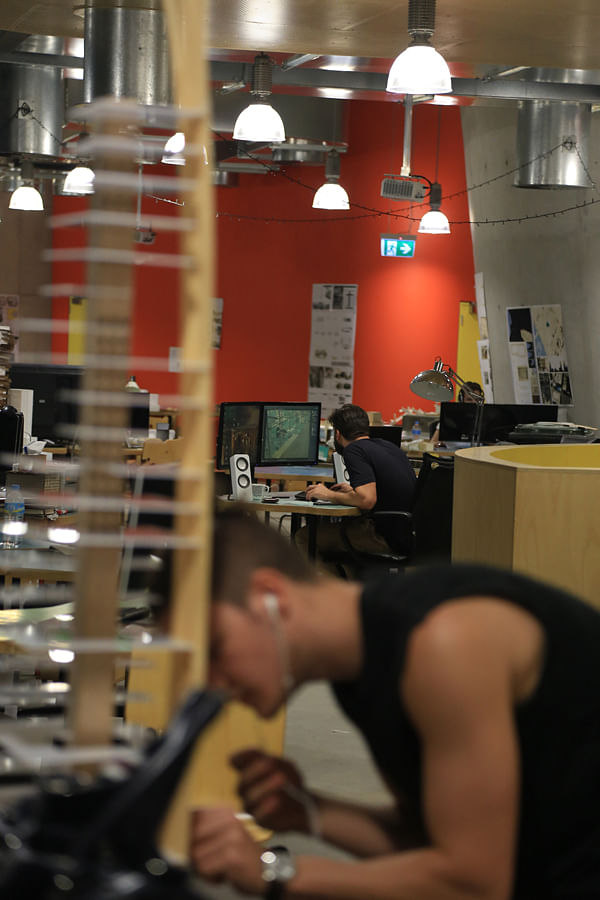
Australia has some interesting predicaments. The country is like a giant donut, where you can inhabit the coast but not the interior. Regionally, we have this influx of immigrants and asylum seekers that come from other areas of Southeast Asia and Africa. We have a country like Indonesia to the north of Australia with 300 million people, the intensity of Southeast Asia, Vietnam, Thailand, Malaysia, Southeast China, Hong Kong, India -- all those areas with rapid population growths that are very interesting to consider. If you’re pessimistic about where climate change is going to take us, I think Australia would have to really step up and try to accommodate, let’s say, suddenly ten million refugees of climate change. So overnight, Australia could need to figure out how to deal with a population impact of 150% in a very short time. There’s quite a raging debate in Australia around that question, what’s a sustainable level of population growth for the country, and I would tend to think that it would be incumbent upon Australia, as a first world country, to truly consider how to act responsibly towards population growth.
The reality is that Australia is going to have to adapt to some of these future problems and consequences. How do we, as architects, deal with the fact that Australia is one of the world’s largest exporters of coal? Our students are very concerned with those issues, and see them as opportunities to do something very meaningful.
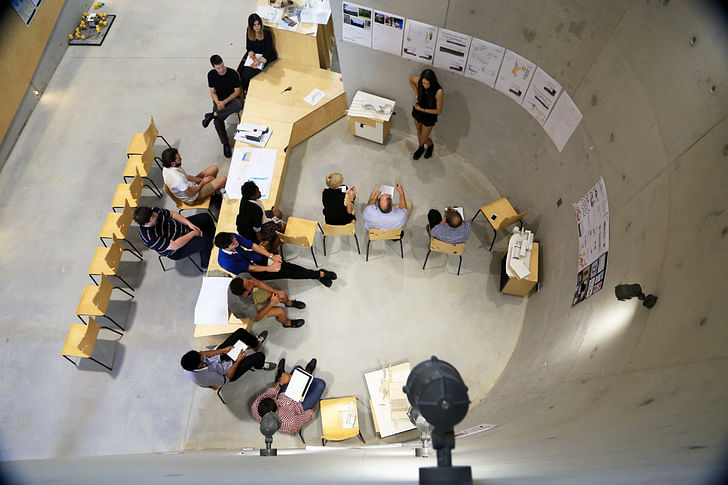
How do you provide for employment after graduation? How do you familiarize yourself with trends within the architectural profession/academia, and adapt these observations into programming and student policy?
As someone who’s trying to lead and steer the program, I particularly focus on programs that I think are quite progressive and leading edge, like SCI-Arc, the Bartlett, the Ivies, as well as some of the other leading and progressive schools that are closer geographically to ours. Who are the really interesting people who are doing very progressive things? I had the opportunity at the end of last year to do five interviews for Architectural Review Asia Pacific with fairly prominent people, for an issue on the impact of digital technologies on the profession, so I did interviews with Greg Lynn, Achim Menges, Dennis Shelden, Paul Minifie, and also Preston Scott Cohen. That set of conversations is just one example of trying to really maintain this direct connection with various players both from the professional and academic sphere who are really doing very, very leading edge stuff, and trying to then return that conversation back to what we’re doing in the school.
Similarly we’re trying to bring in really high-quality academics and practitioners. Next semester we have Andrew Kudless from MATSYS Design and California College of the Arts coming down to teach for two semesters during his CCA sabbatical. Similarly, we have Kristen Whittle, the design director of a firm called Bates Smart, a long-established practice from Melbourne and Sydney. Previously he was a project architect and designer at Herzog & de Meuron, he was one of the lead designers on the Tate Museum and also the Laban Dance Center, and was trained at SCI-Arc. So here’s someone who comes in with a very international perspective, who’s worked at the highest level of international practice, who’s also really trying to change the culture of an established practice while working in Australia and abroad.

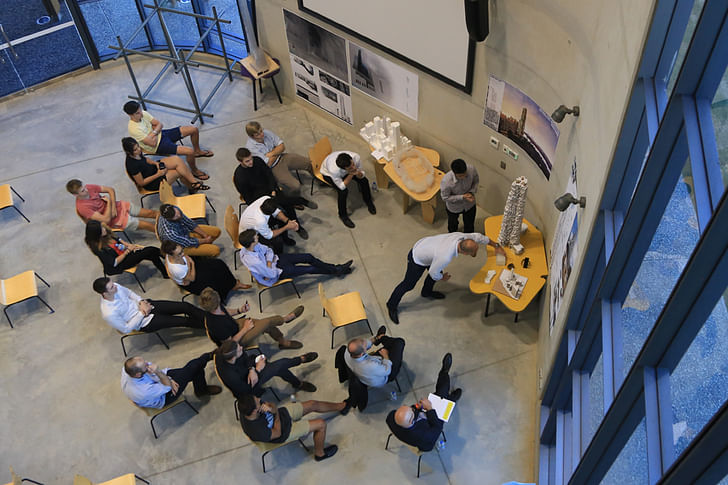
Our lecture series is another manifestation of how we are creating that conversation. Now in its second year, its starting to have quite a good density, bringing in very interesting people from further fields to help create a culture interested in consuming ideas from elsewhere, and repositioning those into the studio work.
The other important thing about the lecture series is that we’re also trying to influence the local culture. We try to bring in these internationally driven people who are working on a very high level within Australia, bringing those people in to start the conversation within the school, and in turn discuss how that impacts the regional practice of profession.
Do you collaborate with other departments or schools when designing programming?
Bond University is only about 4,000 students and is completely tuition-driven and private-sector in its approach. The campus was originally master-planned by Arata Isozaki and an Australian architect Daryl Jackson, and is now just about to have its 25th anniversary -- as far as universities go, it’s still quite young. It only has four distinct “faculties” (or colleges, in an American university): there’s a business school, a law school, medical school and then a faculty of humanities, called “Society and Design”, where architecture fits within. So we don't have any engineering faculties as of yet, which is probably the next place the university will go. We’re very excited about that, because we’d love to have the opportunity to start to engage with structural engineers, mechanical engineers, computer scientists and so forth.
We feel sustainability should be taught as common sense. If you foreground it as the main issue, you forget about the other critical issues. First and foremost, we’re a design school.There is a small information technology department that has a quite well known (at least in Australia) gaming department. In that program they have people teaching things like 3D Studio and coding in other programming languages. So we do have some architecture students that float into that department and bring knowledge back, and we’re starting to collaborate in a more direct way with some of those faculty members, which is quite exciting. We’re trying to find ways to overlap and engage with the film and television students. One of the things that we do feel is that architecture, as a discipline, must become more pervasive and more multi-valent in terms of where it embeds itself and where it can be acting. Beyond just filling up students with conventional, or traditional expected architecture skills, we also put a heavy emphasis on things like broadcasting and dissemination, getting students to think about how they actually popularize and accelerate their ideas through the web, and finding areas where we can do that through other parts of the university. We’re also closely tied to a construction management program.
When the school began, it was formerly part of an “institute” which no longer exists, but that institute was kind of a minor college that included construction management, urban planning, urban design, property development and architecture, all under a loose umbrella of sustainability for lack of a better word. That as a broad brush stroke is something that we, in the architecture program, never felt completely comfortable with. Our view is that sustainability is a very popular word right now, but in ten years it will feel very dated. We feel sustainability should be taught as common sense. If you foreground it as the main issue, you forget about the other critical issues. First and foremost, we’re a design school. Design is what we care about more than anything, and sustainability is an armature of design.
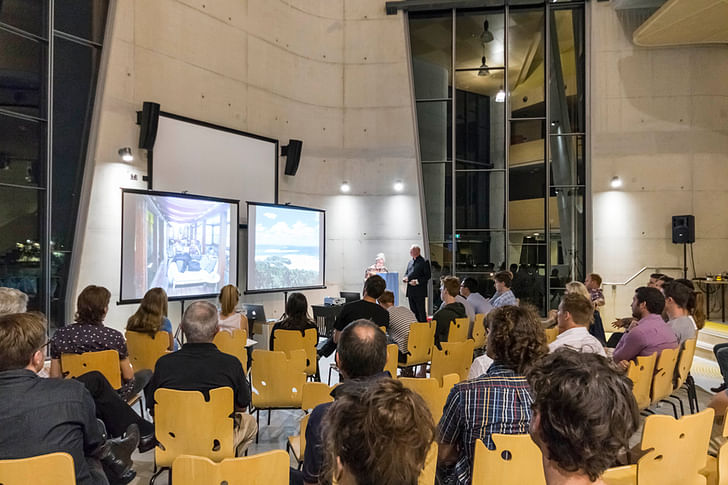
What is the relationship between the school and local government?
I wouldn’t say that we’ve formalized anything specific to that, but we’re starting to develop relationships with the local government, right here in the Gold Coast, and also trying to create connections at the state level with the Queensland government. We have had some early starts to relationships with more humanitarian focused groups like Green Cross and Architects without Frontiers. One of the early advisors at the inception of the program is Paul Pholeros, an adjunct professor at the University of Sydney, and he runs a non-profit group called Health-Habitat. It’s a really interesting organization, because they basically developed a toolkit of architectural solutions to what are ultimately health problems in housing.
How would you like the school to have changed in your tenure?
My main goal is to establish and maintain, first and foremost, a reputation as a design school. So any well-rounded academic program is going to have a very strong professional outlook, and a strong research-platform, and a PhD program, and be community-focused and a developed social agenda. Our very first agenda is making the best quality, highly skilled, highest caliber masters of architecture graduates that we can produce. The master of architecture is the generator of a school’s reputation. We’re trying to create graduates that have an international focus and high-level design, digital fabrication, and prototyping tools, combined with a very broad and intellectually sharp toolkit.
When Peter Cook and Gavin Robotham held the official ceremonial opening of the building, Peter basically laid down a challenge to the university: now that it has an international caliber architecture facility, it has a one of a kind opportunity to create a curriculum and program which rises to the same level as his building. We have this building that’s an exceptional building, and only in the few months that we’ve been here, you can already see how it engenders a particular way of teaching and learning architecture. So we’ve got the tools, the facilities, and the beginnings of a very strong academic staff and academic team to be able to deliver on those ends. Now, it’s really us being able to demonstrate that through our work. When we graduate our first group of masters of Architecture students next year in May, I hope I can say: “Here it is - the proof is in the pudding”.
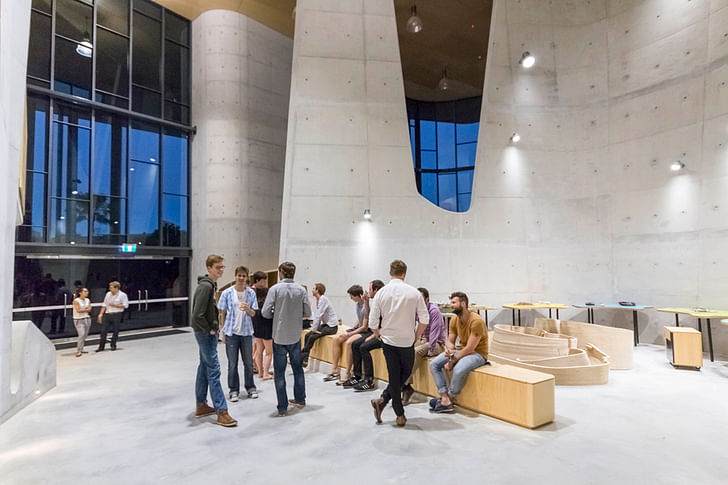
Former Managing Editor and Podcast Co-Producer for Archinect. I write, go to the movies, walk around and listen to the radio. My interests revolve around cognitive urban theory, psycholinguistics and food.Currently freelancing. Be in touch through longhyphen@gmail.com
2 Comments
"We try to impress upon students the fact that an architectural training can really equip people to do quite a broad number of things."
I think this is one of the best things anyone can say about the architectural educational process. I'm so glad that you said this.
The quote encompasses a very solid and real definition of what is determined during the process of learning design via architecture. There is so much to find during the journey, so many ideas, processes, and methods one is exposed to. The latter builds the foundation for the beauty found in the architectural educational experience.
Sometimes these exposures don't always take one in the direction of an architectural profession, but open the doors to an internal desire to pursue happiness of ones true self and professional intrigue learned during the architectural scholastic experience.
I had the benefit of being a student of Chris Knapp's while he was teaching at the University of Michigan. He truly is an inspirational professor and should be sought out by those looking to maximize their architectural education!! Thanks Chris!
Best,
Ryan Wainwright
REMINDS ME OF THE EARLY DAYS OF SCI-ARC
Block this user
Are you sure you want to block this user and hide all related comments throughout the site?
Archinect
This is your first comment on Archinect. Your comment will be visible once approved.